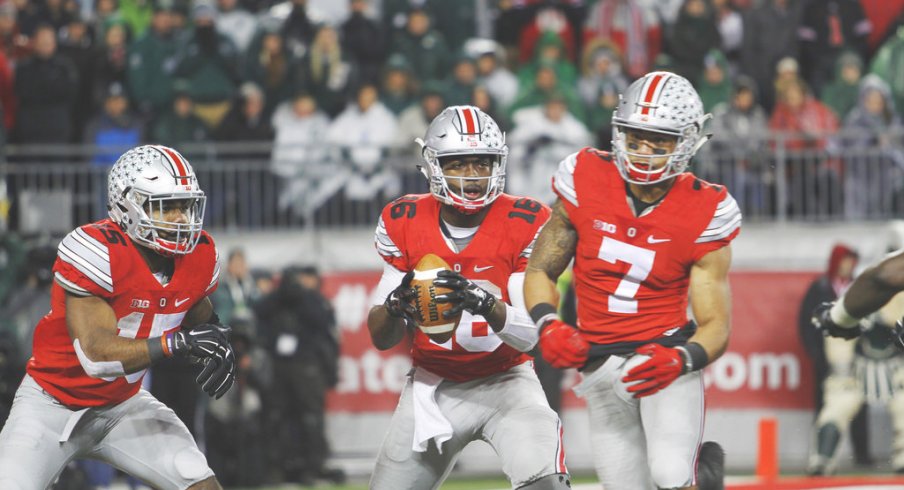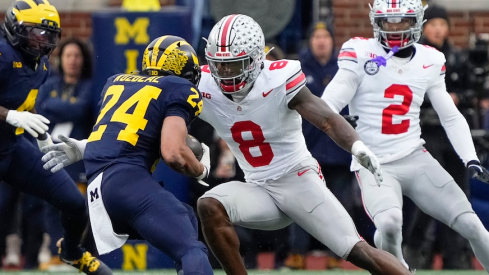Up 14-7 midway through the second quarter of the 2016 Fiesta Bowl, Ohio State offensive coordinator Ed Warinner flashed a glimpse of what changes may come for his offense in the coming fall. Gone will be eight starters including the leading rusher and top three receivers, leaving many to wonder where returning quarterback J.T. Barrett will look to distribute the ball once the 2016 season kicks off.
While helming the Buckeye offense over the past two seasons, Barrett has proven to be most valuable when asked to make quick decisions in the passing and option games. Conversely, the unit seemed to struggle most when it became predictable, attempting to force the ball into the hands of Elliott, Braxton Miller, or Mike Thomas simply because they hadn't touched it recently enough.
Throughout the tenure of both Warinner and his boss, Urban Meyer, the Buckeyes have almost always taken the field with '11' personnel, meaning one running back, one tight end, and three wide receivers. When predicting who will join Barrett on the field next season, most have justifiably tried to fill the gaps according to that same alignment.
But if that drive in the Fiesta Bowl is any indication, Warinner may mix things up in the coming year, calling for more formations that feature two running backs instead of just one. By doing so, he may well take the best advantage of his quarterback's best skill while avoiding the pitfalls that set back the 2015 edition.
We can see why in the example below. After Curtis Samuel motioned to the backfield, creating this two-back shotgun look, Elliott takes what appears to be a simple inside handoff for a 16-yard gain and a first down.

In reality though, this was a classic triple-option play, with Elliott's tight zone run playing the role of the old fullback dive. As the middle linebacker follows Samuel to the outside, little does he know that his action will force Barrett to give on the handoff, since OSU now has five blockers for the remaining five Irish defenders.
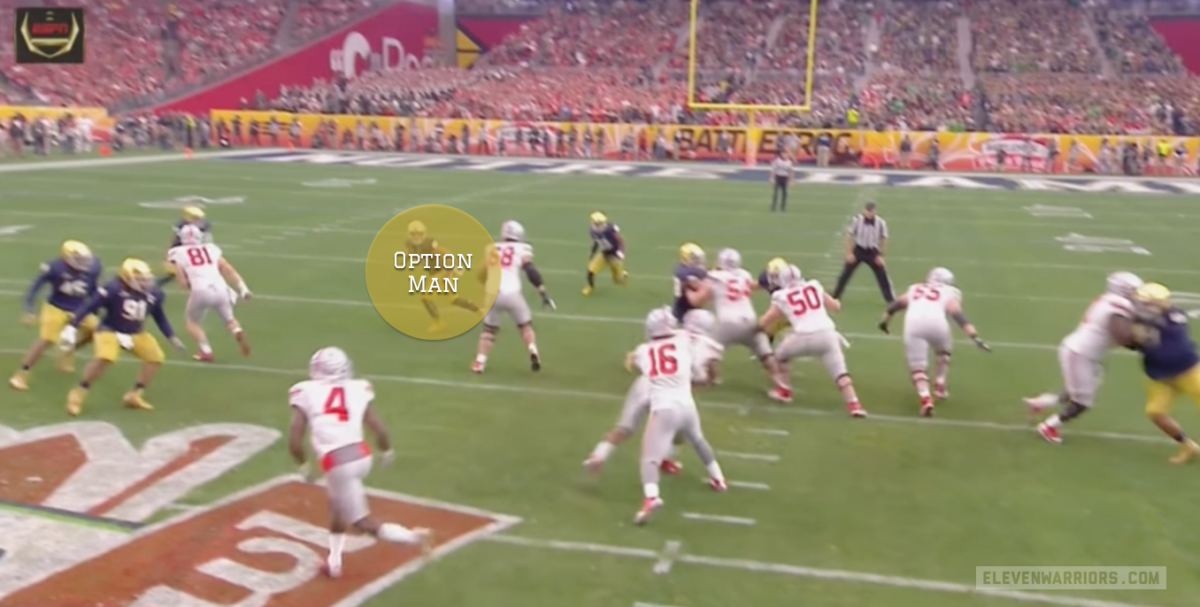

On the very next play though, the Buckeyes would repeat the exact same play call. This time though, the Notre Dame linebackers would play the inside handoff instead. Barrett would nearly pick up another first down as he raced around the left end, running by a lost defender forced to account for both he and the pitch man, Samuel.

On their next possession, Warinner would call for the concept once more before dialing up the perfect complement, a reverse to wide receiver Jalin Marshall. The motion and wide track from the slot receiver (this time, Braxton Miller), along with a lead block from Elliott that mirrored his inside handoff, gave the defense the impression of the triple-option around the left end coming at them once again. This allowed Marshall some wide-open running room to the opposite side as he cut back across the formation to take the designed pitch.
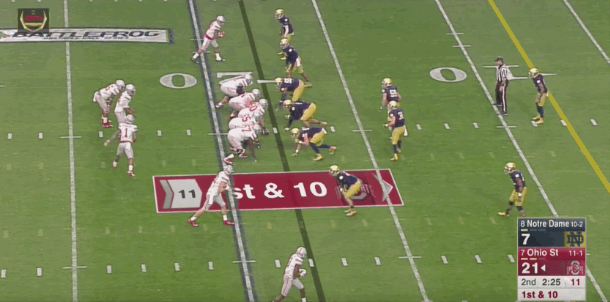
Like many spread-to-run offenses, two-back shotgun formations are not new to the Ohio State playbook. However, this package in the Fiesta Bowl showed a balanced attack that let the defense dictate where the ball was going with the triple-option, then countering with the reverse to ensure the Buckeyes could attack the middle and either edge of the field, all from one look.
Most shotgun run plays are beholden to the alignment of the running back, with the direction of the play often to the side opposite the one he lines up. With backs to either side of the QB, any run concept can be run in either direction, keeping the defense on edge.
To truly make the most of this look though, the Buckeyes will need more than two plays to call. To find some others, they can look directly in the direction of their first road opponent in September, the Oklahoma Sooners.
With two of the nation's most talented running backs in Samaje Perine and Joe Mixon on the roster, the Sooners were forced to get creative in their efforts to get both on the field at once. Though Perine is technically the lead back, he is often tasked with getting his hands dirty in the blocking game.
In addition to lead outside zone runs like the Buckeyes also run, the Sooners also use their backs on arc blocks, much as tight ends like Nick Vannett are often tasked with. On this zone-read play, Mixon (#25) starts to quarterback Baker Mayfield's right before leading him around the left end as a blocker.

But the Sooners also like to spread the defense across the entire width of the field with a run-pass option, such as the one they used to open the Orange Bowl against Clemson. Mixon, being the better receiver, heads in motion wide before the snap, dragging the optioned linebacker (#44) with him, and setting up a short swing pass on the outside.
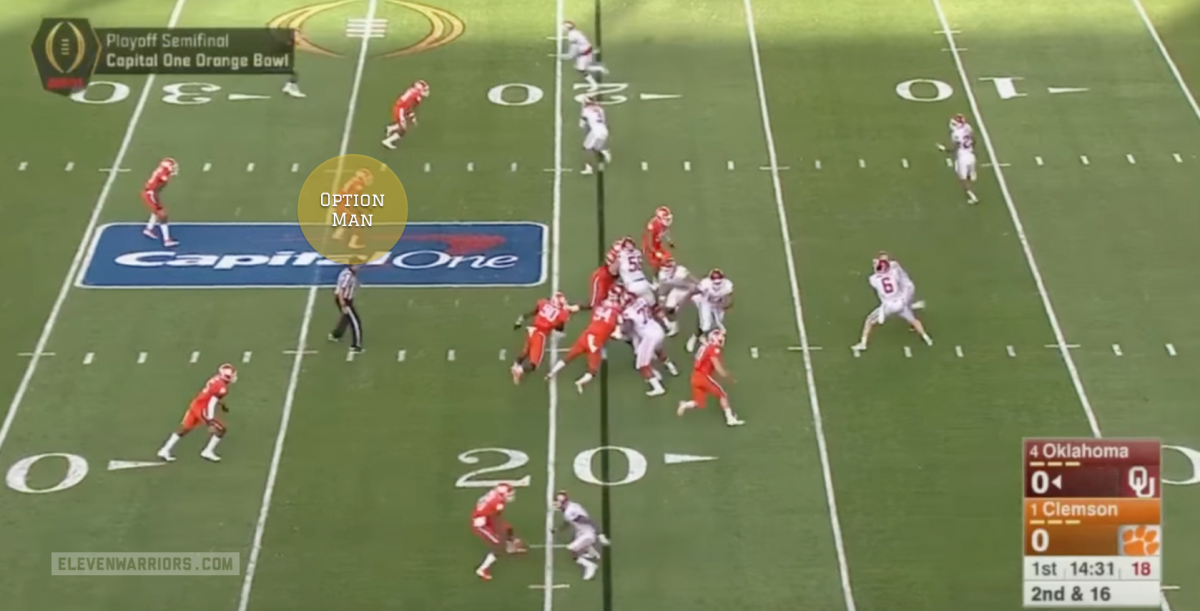
With the linebacker removed from box as he follows Mixon, Mayfield hands off to Perine (#32), who follows his five blockers as they take on the remaining five Clemson defenders.
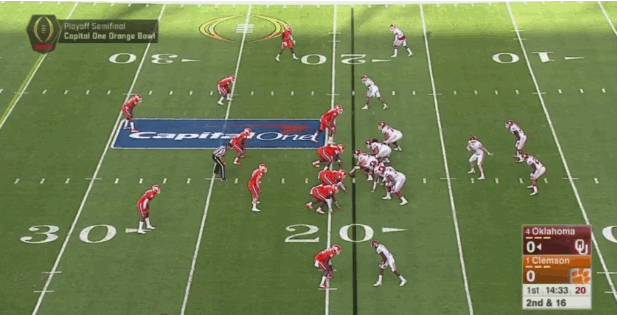
If the linebacker stays in the box in order to help against Perine, Mayfield makes an easy throw to the outside, giving his playmaker a chance to do just that in the open field. If not for a great open field tackle by the safety, Mixon may have busted this for a huge gain.

By attacking the edges in the passing game like this, the Sooners are able to open up their downfield aerial attack as a result. With both backs breaking out of the backfield on pass routes at the snap on the example below, the middle of the field is wide open as the linebackers bail out to follow them.
All the top receiver needs to do is gain inside position on the cornerback at the line and his slant route is wide open.

The linebackers can't be blamed for paying so much attention to those backs, as they're acting like a classic, 'pro-set' offense from the 1980s, featuring split backs that were major parts of the passing game. Perhaps no other team embodied this ideal more than Bill Walsh's San Francisco 49ers, who regularly found running backs Roger Craig and Tom Rathman downfield on one of the countless routes they could run.
This excerpt from Walsh's 1982 playbook gives just a taste of all different places they might end up after releasing from the backfield, making life miserable for the run-stuffing linebackers tasked with stopping them.
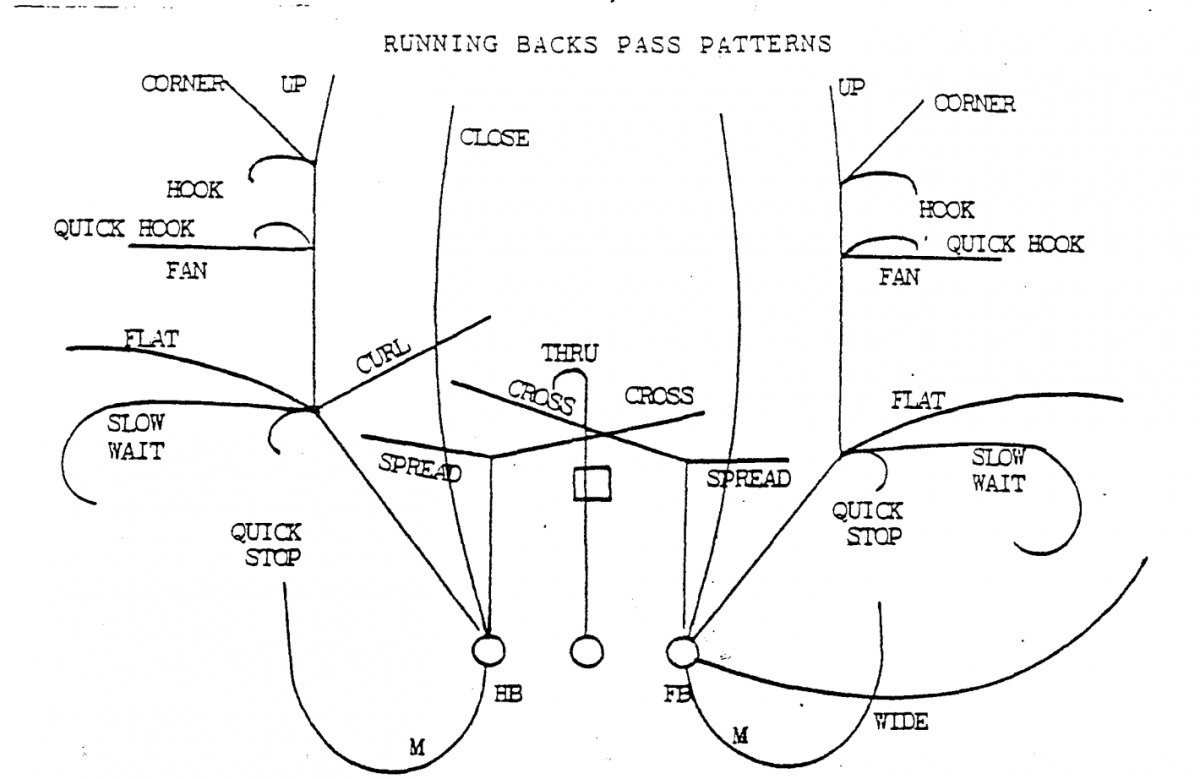
Of course, this thinking would eventually spawn many of the five-wide receiver looks that have come to be the norm in college football, as the two backs simply played the same roles now occupied by slot receivers. Look no further than the way the Sooners call the 'Snag' concept from this formation, with the running back attacking the flat to open up the underneath receiver.

By now you may have assumed (correctly) that none of this thinking is exceptionally novel, as every concept shown here has been executed by countless teams at every level for decades. However this move to twin backs is simply the latest zig to the defense's zag.
Somewhere in the late 80s or early 90s, the split-back looks lost favor to the I-formation, with the threat of two ball-carriers giving way to a feature back and a glorified offensive lineman in the form of a fullback. Eventually, coaches realized the value of spreading the field and that fullback gave way to an additional receiver.
While the concepts run with this split-back look aren't new, the way defenses must react to them will certainly feel that way. Most notably, defensive coordinators will have to decide whether to keep three linebackers on the field and hope they can stay with a running back in pass coverage, or put in a nickel package and be exposed to a dangerous rushing attack.
Though the Buckeyes lack a clear descendent to Elliott as an inside runner, Samuel and fellow 'H' receiver Dontre Wilson are certainly fit to play the part of the second back in the set. Their presence, along with the threat of Barrett running it himself, should help open up inside running lanes for either Mike Weber or Brionte Dunn, making their new jobs a little easier...as well as Warinner's.
